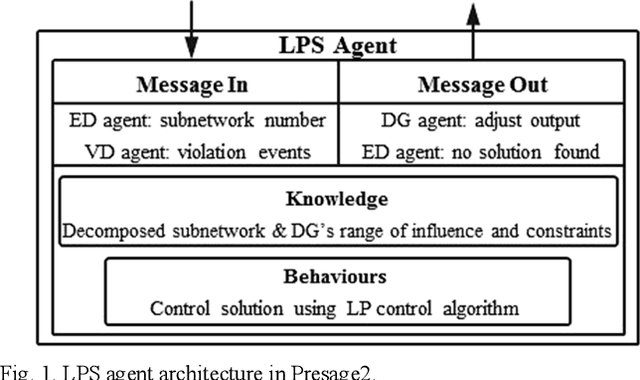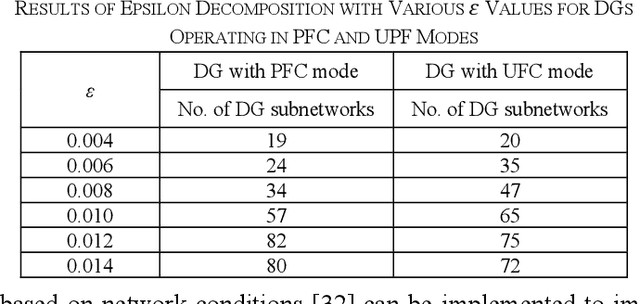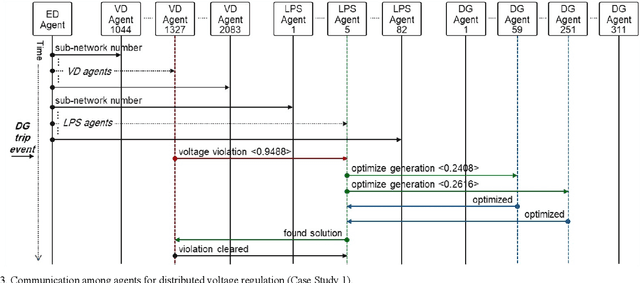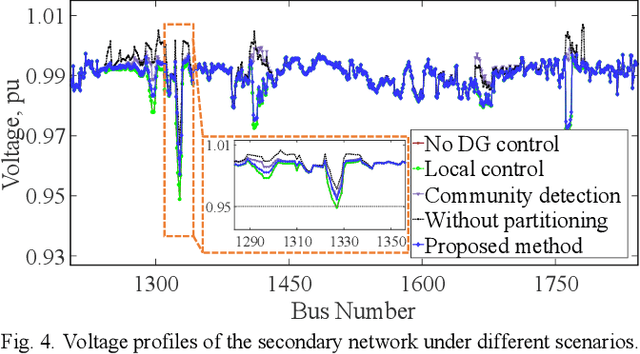Dimitrios Athanasiadis
A self-organizing multi-agent system for distributed voltage regulation
Feb 01, 2022



Abstract:This paper presents a distributed voltage regulation method based on multi-agent system control and network self-organization for a large distribution network. The network autonomously organizes itself into small subnetworks through the epsilon decomposition of the sensitivity matrix, and agents group themselves into these subnetworks with the communication links being autonomously determined. Each subnetwork controls its voltage by locating the closest local distributed generation and optimizing their outputs. This simplifies and reduces the size of the optimization problem and the interaction requirements. This approach also facilitates adaptive grouping of the network by self-reorganizing to maintain a stable state in response to time-varying network requirements and changes. The effectiveness of the proposed approach is validated through simulations on a model of a real heavily-meshed secondary distribution network. Simulation results and comparisons with other methods demonstrate the ability of the subnetworks to autonomously and independently regulate the voltage and to adapt to unpredictable network conditions over time, thereby enabling autonomous and flexible distribution networks.
 Add to Chrome
Add to Chrome Add to Firefox
Add to Firefox Add to Edge
Add to Edge